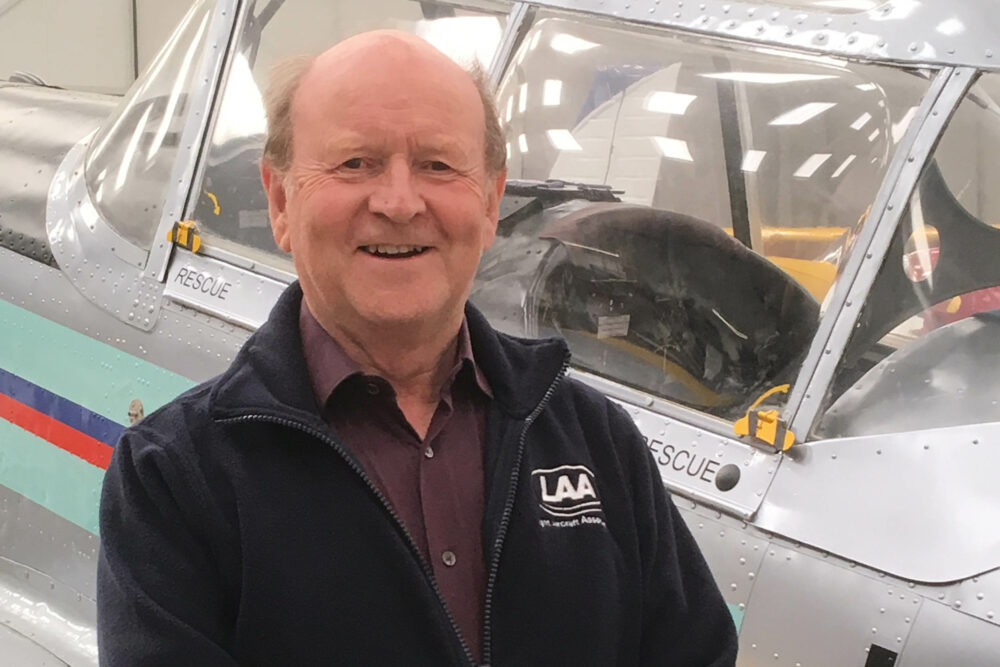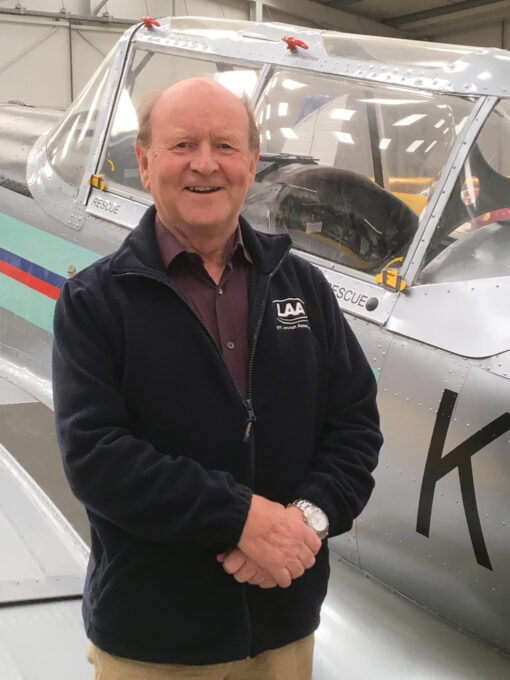How did you get into aviation?
At school, I read Reach for the Sky by Paul Brickhill, about Douglas Bader, who lost his legs but carried on flying. I still had both my legs, but flying in the RAF sounded like a great idea, so I joined the Air Cadet Movement. I received a gliding scholarship at 16, and when I applied to the RAF, it gave me a flying scholarship for a PPL as part of my Cranwell cadetship.
How did that flight training go?
The entire training, including groundschool, was completed in just four weeks. I started in a Beagle Terrier and still remember being taught aerobatics on my fifth lesson. The syllabus required full spins and after the recoveries Rosie Stevenson taught me loops.
My circuit and navigation phases were flown in the Piper PA-22. Switching from tailwheel to nosewheel wasn’t such a big thing as I hadn’t done many landings in the Terrier yet. One of the other students was flying a Cessna 172 when his propeller came off – he managed to do a safe landing – but my PPL training wasn’t that eventful. Therefore, I don’t remember much about my first powered solo.
Were your other first solos more memorable?
Yes. Before my first solo in a glider, my instructor suggested I needed extra training on what to do if the cable broke or the winch failed, so I had an extra dual flight. On my solo, the cable broke. However, I reacted so quickly, the instructor accused me of pulling the cable release myself.
My first jet solo happened in a Jet Provost Mark 4, with call sign JRM13, the initials of my instructor Robin McEvoy. Just before I took-off I received a radio message, asking if I might like to put my flaps down… I thought, “That was silly! I had better go through my checklist again!” Ever since then, 13 has been my lucky number.
I’m a great believer that we can all make mistakes, and need to learn from them. Instead of hiding your errors, spread the word and someone who finds themselves in a similar situation might be able to use your experience to sort the problem out.
My first solo in the Gnat was also quite memorable. This little aircraft is so fast that instead of doing one circuit, students were sent all around the island of Anglesey.
What do you hope to achieve in your role as the new Head of Training for the LAA’s Pilot Coaching Scheme?
As Head of Training I’ll be mainly concerned with the Scheme’s processes and compliance with EASA and CAA regulations. I’ll also be available to help the coaches and the LAA office team with queries about licensing and training, because these seem to crop up frequently.
Regulations are actually pretty clear if you keep on top of them, but not everyone is able to do that. With the variety of different licences out there, pilots don’t necessarily get the right info when asking their peers or instructors, for example, if specific flights are valid for their licence or not.
Mostly though, I aim to encourage more pilots to make use of the LAA’s coaching scheme. All our coaches are highly skilled experts with a lot of knowledge, which isn’t restricted to LAA types of aircraft. Glider pilots tend to fly with an instructor regularly, but many powered pilots appear to avoid flying with an instructor unless it becomes a legal requirement. I’d like to change this attitude.
Why should pilots fly with a coach?
If you’re flying an aircraft that isn’t certified to international standards it’ll be a unique machine, and almost certainly have slightly different flying characteristics to the next one of its type. Our coaches understand this. They don’t just give pilots guidance on how to fly their specific machine though, they also help them expand their flying experience. They can give advice on skills outside general aircraft handling, like operating out of small farm strips and taking your aircraft overseas.
Apart from that, if you only fly a few times a year, your flying skills tend to drop away. It’s very important that these skills are recovered safely. What better way of doing this than in your own aircraft with a mentor who understands that aircraft and who can relate and guide you through the process?
What do you love about flying most?
I just love being airborne, looking down and seeing the ‘marvels which God hath wrought’. I especially like flying gliders, soaring with eagles, as I’ve done over the Alps, or just looking around at the scenery below, it’s fantastic. To be honest I’m a very lazy pilot, I prefer to ‘let the plane take the strain’. When I’m instructing, I spend much of my time telling the student to trim, relax and enjoy the flight. After all, why are we up there, if not for our enjoyment?








